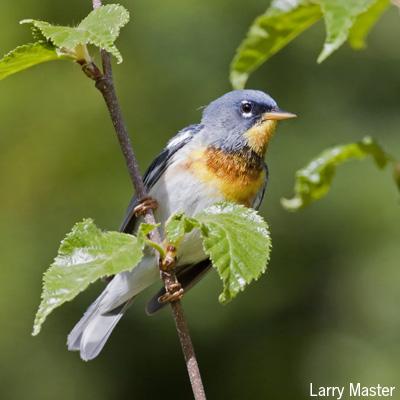Impacts to Wildlife from the Ecological Consequences of Exurban Development II: Evaluating the Ecological Road Effect Zone

In a past study, NSRC researchers demonstrated that in the Adirondack Park of New York, bird and potentially other wildlife communities are impacted in a zone of up to 200 meters from a house. This “ecological impact zone” spans about 31 acres surrounding a single home. To determine if the impacts related to homes are also due to associated roads, researchers measured the ecological impact zone of roads on Adirondack songbirds.
Researchers conducted bird counts at the road edge and at 200 and 400 meters into surrounding forest along roads placed into three levels of impact based on width and average speed and traffic levels. Response of birds varied by species. Sparrows, woodpeckers, flycatchers, and vireos responded positively to road edges; buntings, tanagers, grosbeaks, and kinglets responded negatively; crows, jays, warblers, and nuthatches were abundant at road edges and interior woods but not at intermediate distances.
Researchers determined that the ecological impact zone may extend as far as 200 meters for both roads and houses, but the relative impacts of the two vary. Roads may provide foraging and feeding opportunities but provide less opportunity for nesting compared to areas near houses. These results differ from other studies which suggest that road traffic can have a strong negative impact on breeding bird densities near roads. Roads studied in the Adirondack Park were smaller and of lower traffic densities than those examined by other researchers and are probably similar to many throughout the Northern Forest. Keeping residential roads narrow and speed levels low will help reduce strong negative impacts on songbird communities.
Download printable version [PDF]
Download full final report [PDF]
